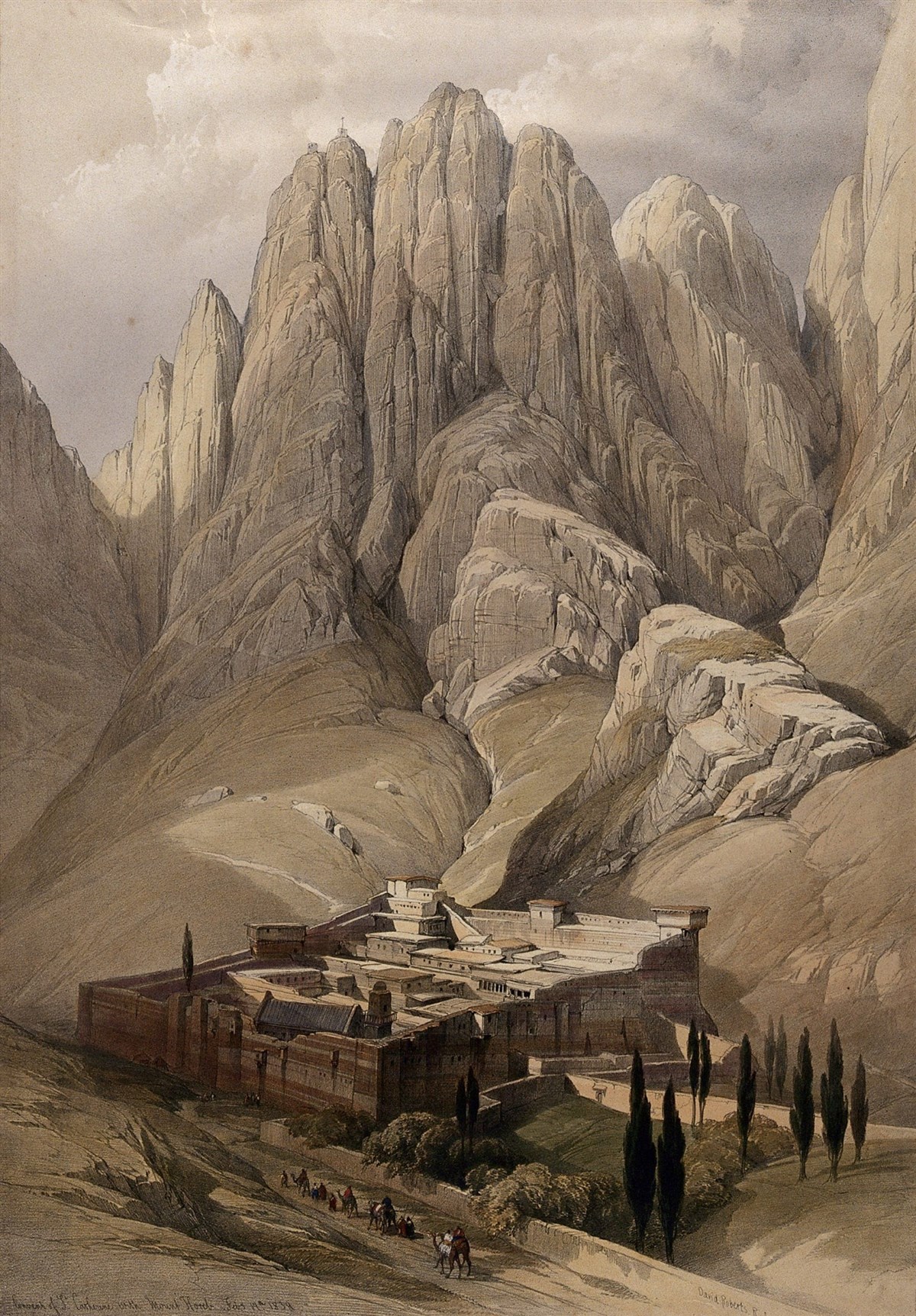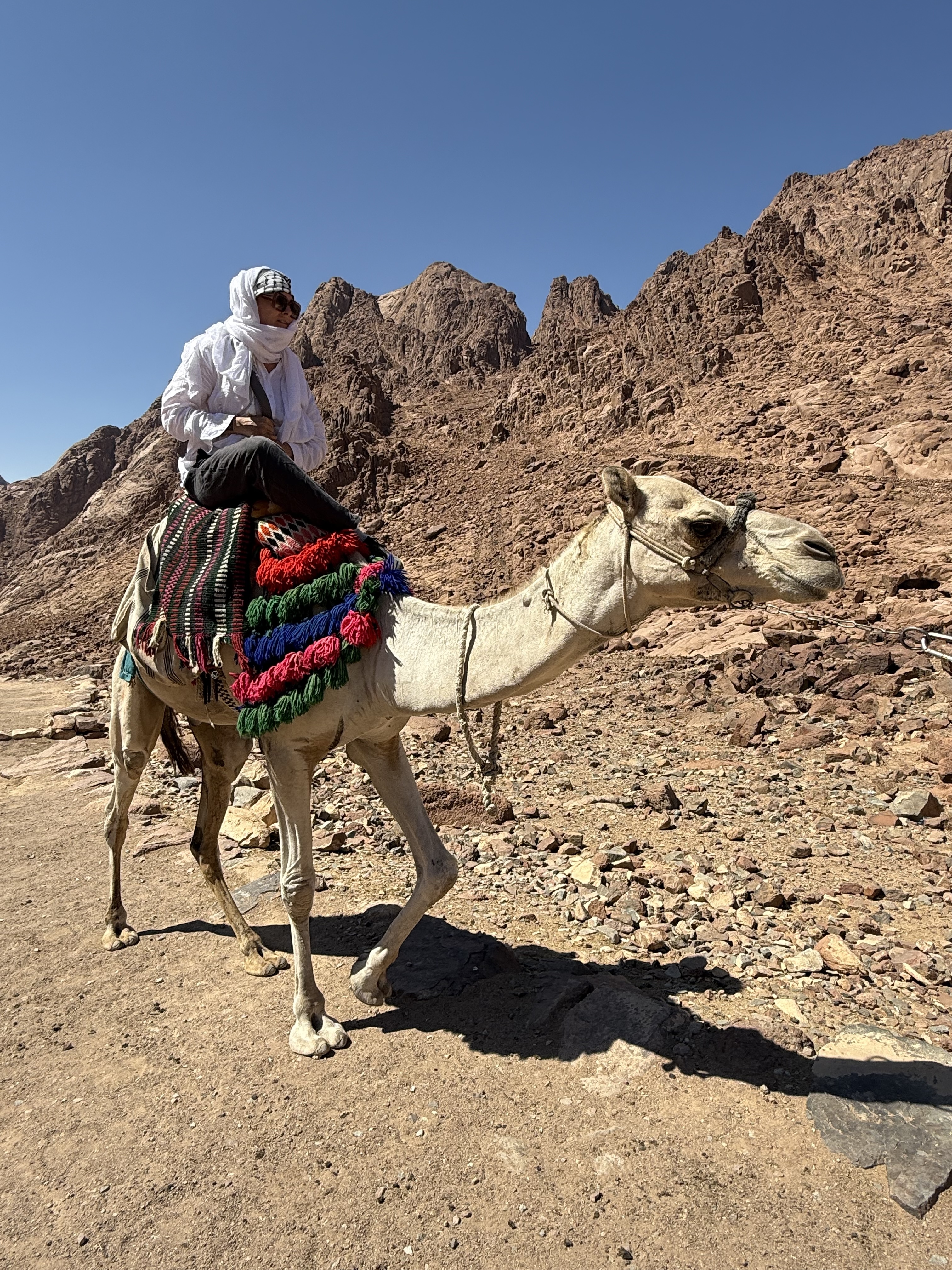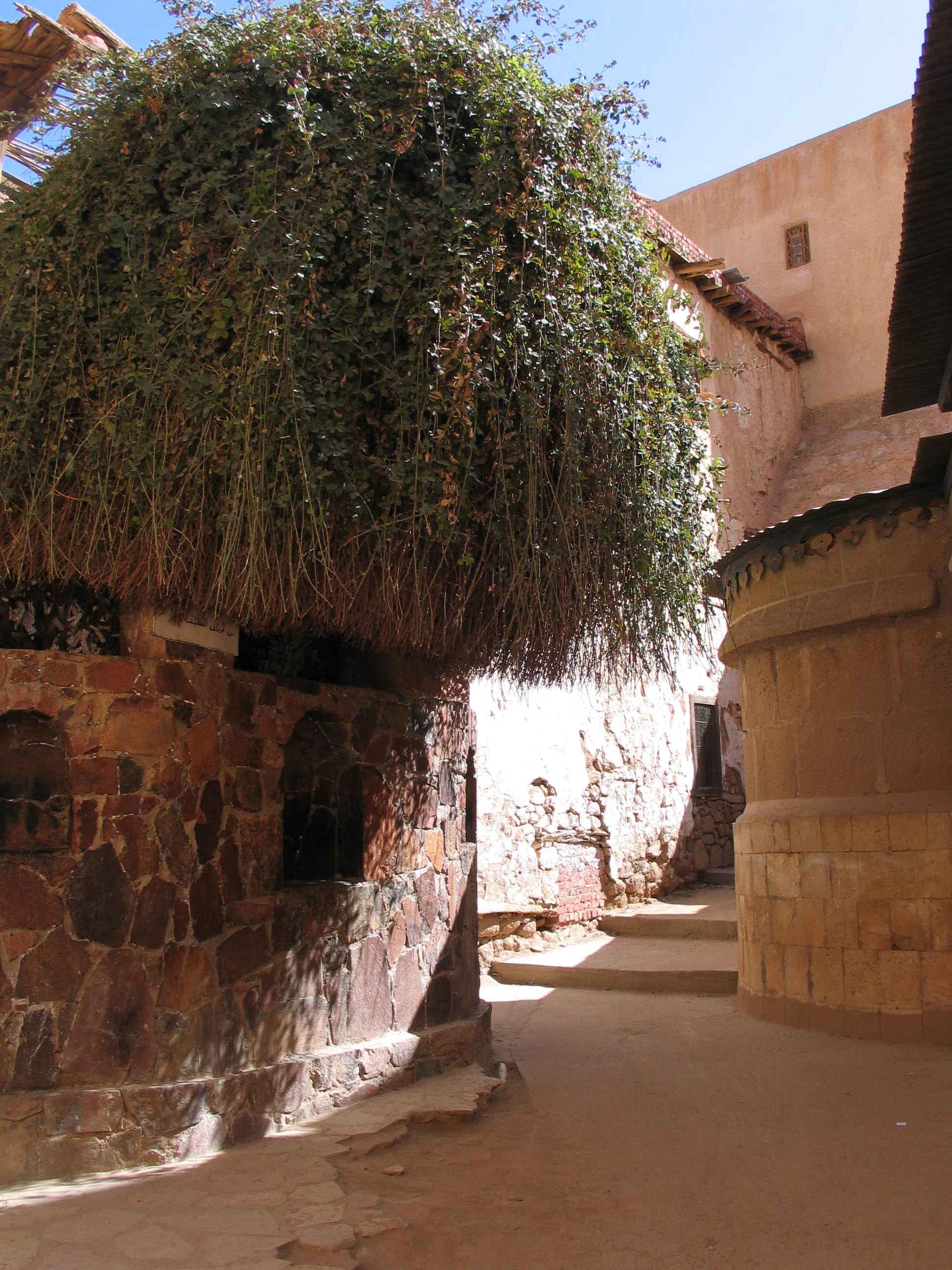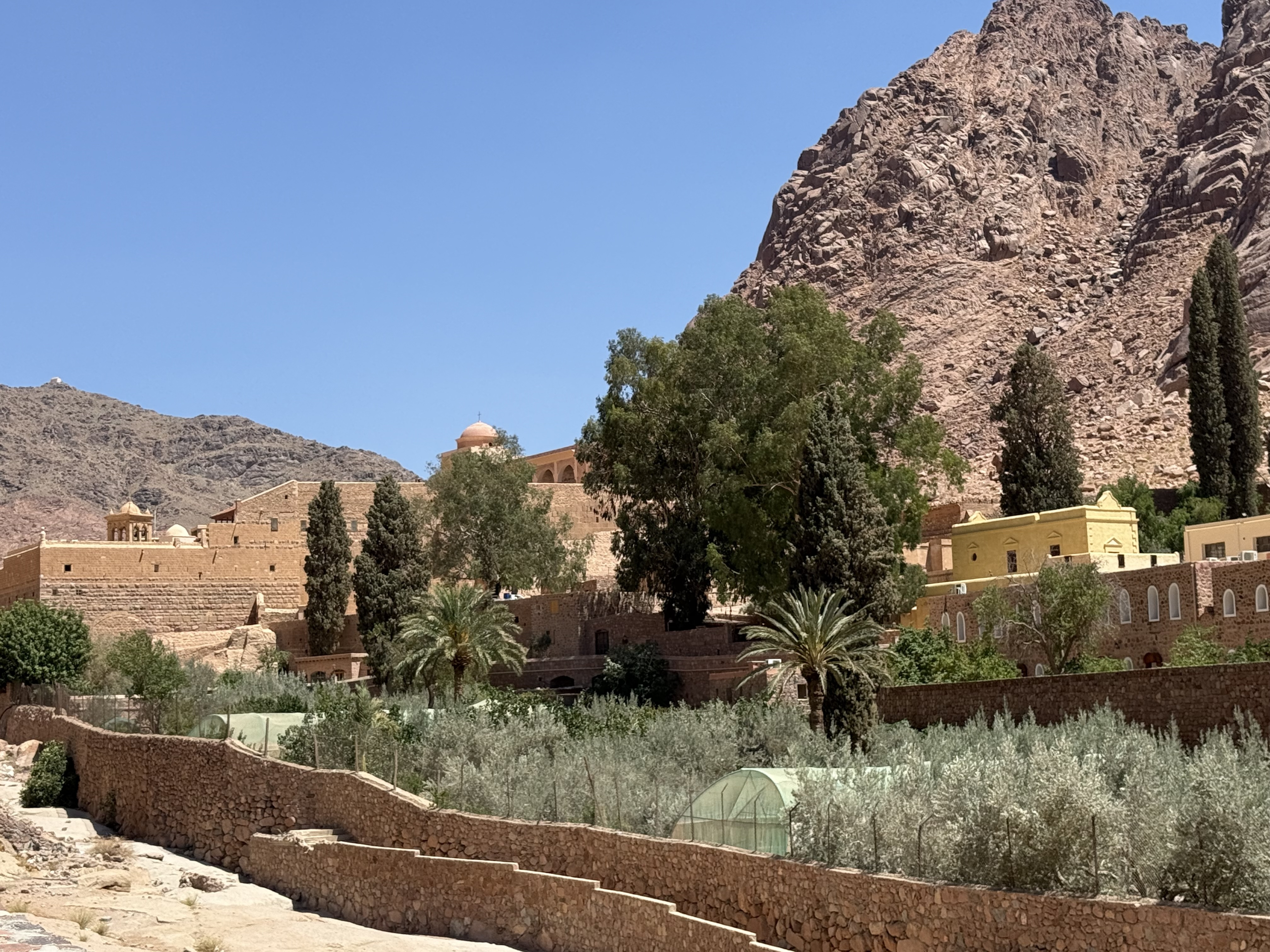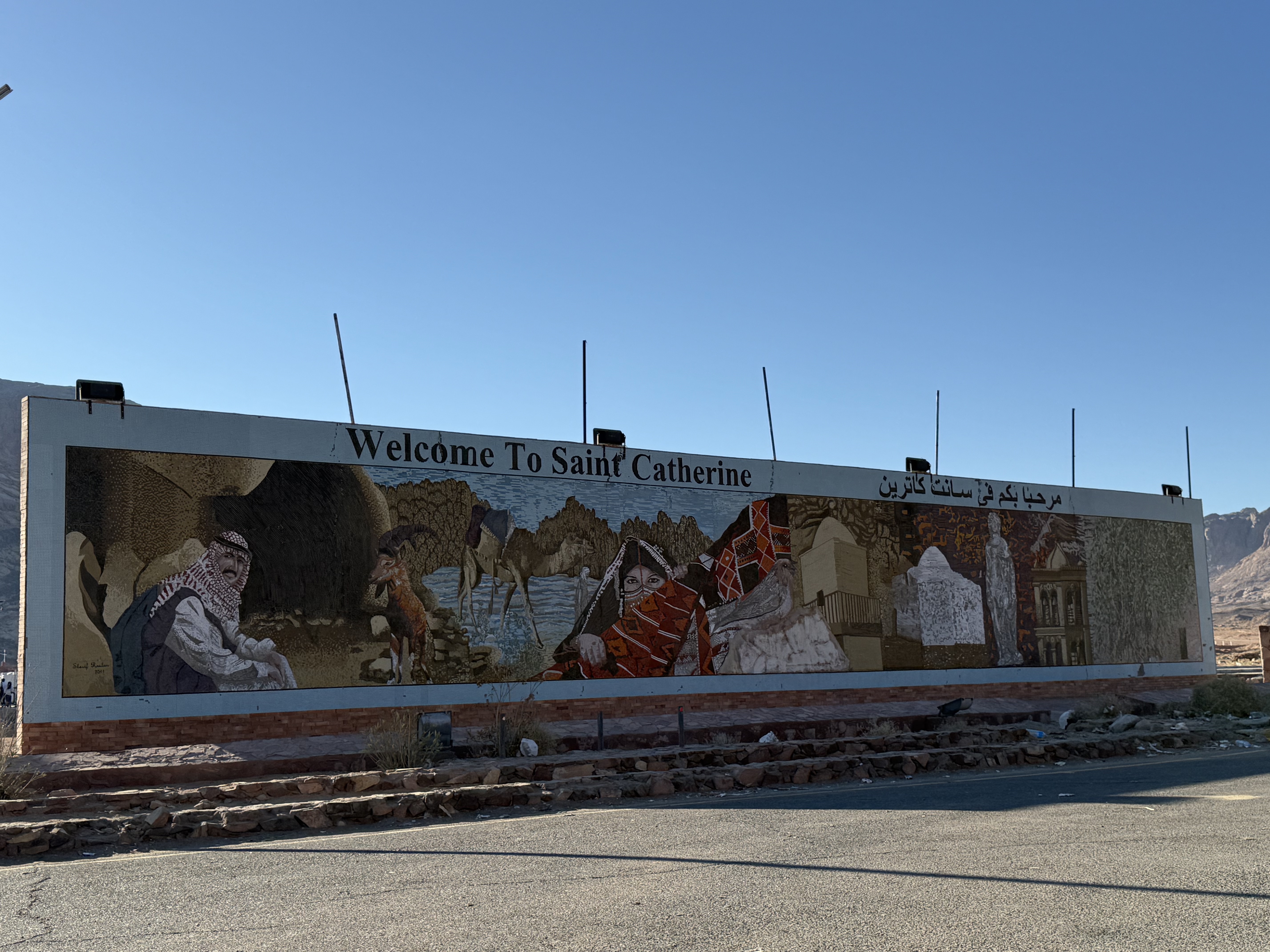Mount Sinai Spiritual Pilgrimage 20-27 February 2026
Mount Sinai Spiritual Pilgrimage 20-27 February 2026
The Holy Summit of Sinai, also known as Jebel Mousa, is the place where Moses received the Law from God. Here are to be found the Chapel of God in the Highest, surrounded by the ruins of the larger Justinian basilica, and in addition, the Rock of Moses, and a mosque. The peak is at an altitude of 2,285 meters, and can be reached from the monastery by two different routes. The older is the Steps of Repentance, consisting of some 3,750 steps that ascend to the very summit, constructed in the 6th century. In the middle of the 19th century, Abbas Pasha I created the alternate Camel Trail, a more circuitous and more gradual ascent, that coincides with the Steps of Repentance for the last ascent of 750 steps.
You will immerse in the earliest description refers to the Monastery of the Holy Virgin, for the revelation of God at the Burning Bush was seen as a type of the Virgin Mary and the Incarnation. The monastery is also especially dedicated to the holy prophets Moses and Elias, who both came to this mountain, and who both spoke with Christ at the Transfiguration. More recently, it has been known as Saint Catherine’s Monastery. This remains its name today, though the monastery has not lost its earlier dedications.
You will enter prayer whilst in 5 days retreat at Saint Catherine's Monastery. The Chapel of the Holy Bush is the most ancient shrine in the monastery, and it was around this site that the first community of Sinai anchorites gathered. The bush was mentioned by Egeria, who came to Sinai in 383-384 AC. The chapel is standing at the eastern end of the great basilica. Pilgrims enter this most holy place without shoes, in keeping with God’s command to Moses.
You enter extreme mysticism and spiritual connection as you climb to The Holy Summit of Sinai, also known as Jebel Mousa, the place where Moses received the Law from God. Here are to be found the Chapel of God in the Highest, surrounded by the ruins of the larger Justinian basilica, and in addition, the Rock of Moses, and a mosque. You will ascend Mount Saint Catherine where angels flew her body to the summit.
Includes
- St Catherine's Monastery Accommodation
- Breakfast V. VG. GF, LF
- Japanese/English
- Dinner
- Air Conditioned Luxury Mini-Bus
- Camel Pilgrimage
- Nature and Facilities for Extreme Mysticism, Spiritual Truths, God
Excludes
- All personal shopping
- 10-20% tipping on all services
- International Travel
- Domestic Flights
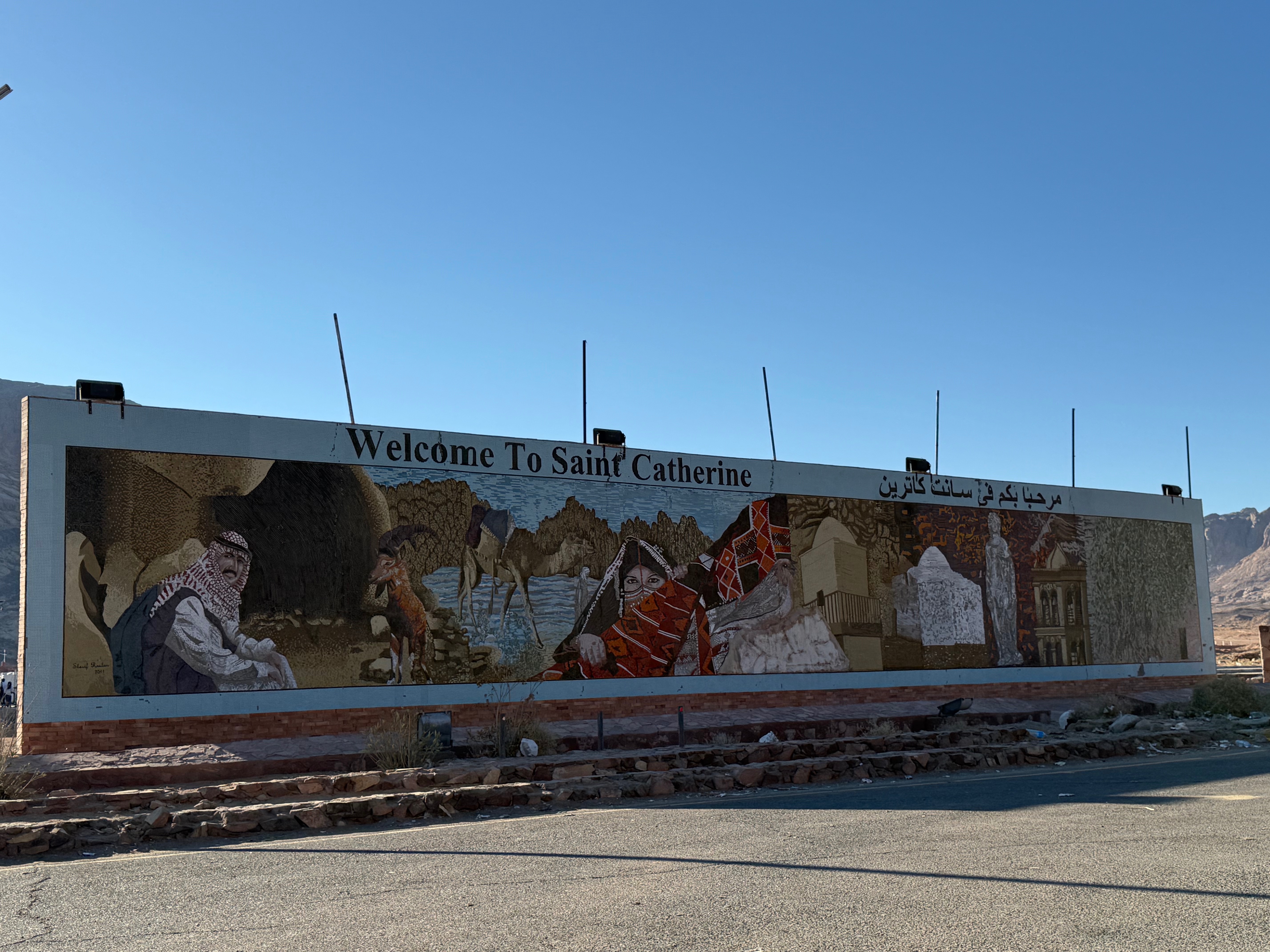
At the heart of the South Sinai is the Holy Monastery of Saint Catherine, guardian of a spiritual and cultural presence extending back over eighteen centuries. As of old, the monastery attracts pilgrims and visitors from all over the world, and strives to continue its age-old ministry under these recent very changed circumstances. The South Sinai mountain complex, with its granite mountains and arid landscape, consists also of narrow valleys and small oases that are of great religious and historical significance. These sites are associated with the forty year sojourn of the Children of Israel, and with the ascetic struggles of the hermits of Sinai, from the dawn of the monastic movement, to more recent years. The Holy Monastery of Sinai is located at the foot of Mount Horeb, the Mount of the Decalogue. The valley opposite the monastery is the traditional site where the Children of Israel camped. The modern village of Katrine is located here today.
The monastery complex built around the site of the Burning Bush and the Well of Jethro developed across the centuries. The monastery catholicon is surrounded by nine chapels and a bell tower. There are a further twelve chapels within the monastery complex. Adjacent to the Tower of Saint Helen is the residence of the Archbishop and the Chapel of the Life-giving Spring. To the west are accommodations for pilgrims, and to the north are administrative offices. To the east are the old bakery and the refectory, and a range of cells. The south wing, completed in 1951, houses the library, the icon storage room, a seminar room, and other workshops and cells.
To the west of the fortress of Justinian lie the monastery garden, the cemetery, the ossuary, and other supporting structures. From here, the path begins that leads pilgrims to the peak of Mount Sinai, as well as to the peak of Mount Saint Catherine, and the hermitage of Saints Galakteon and Episteme. The area also contains numerous chapels, gardens, and hermitages.
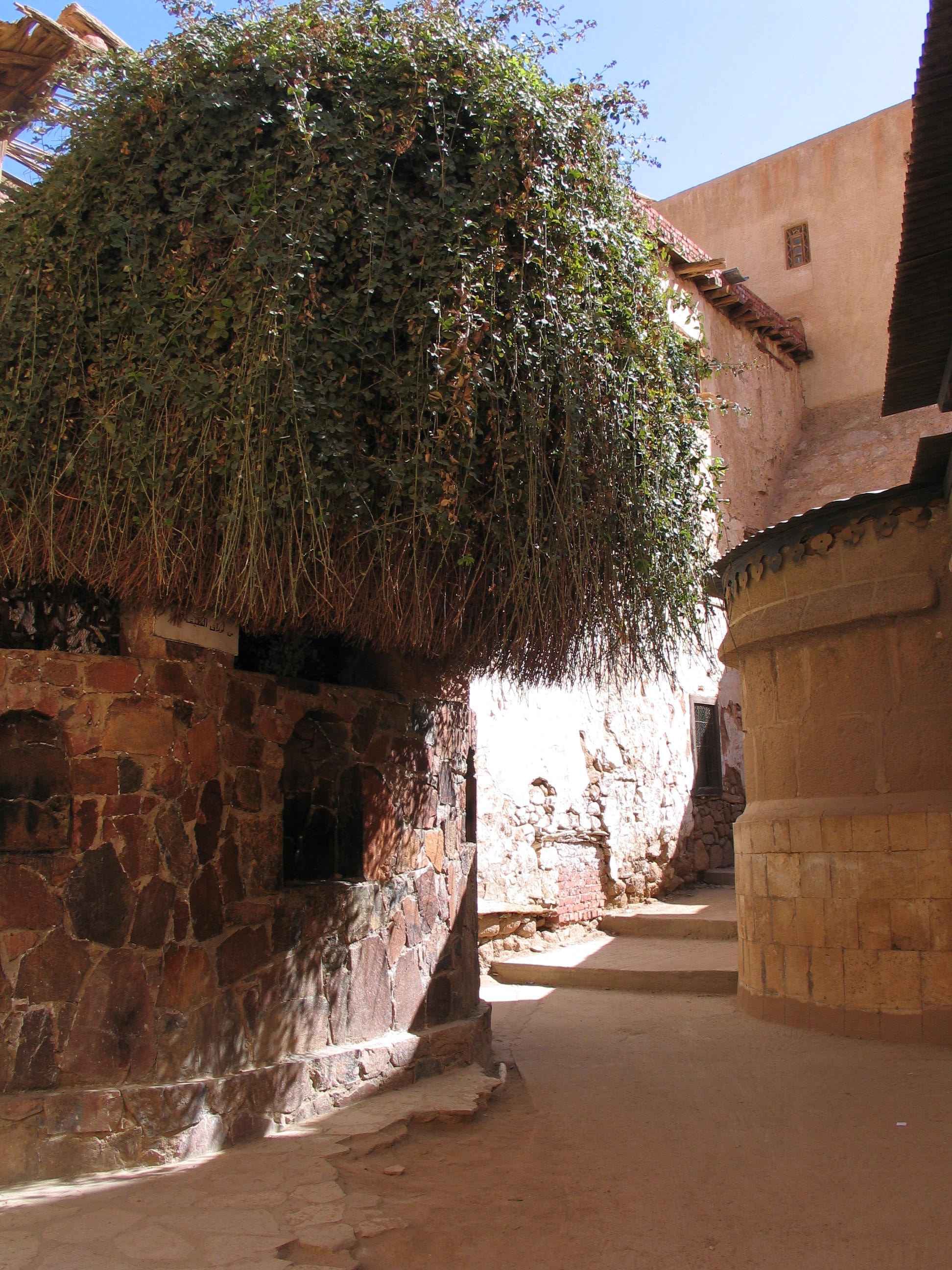
At the age of forty, Moses fled into the wilderness to escape the Pharaoh, and came to the land of Midian. Here he met Jethro, the priest of the Most High God, and married his daughter Zipporah. They had two sons. Moses called his firstborn son Gershom, saying, “I have been a stranger in a strange land” (Exodus 2:22), and his second son he named Eliezer, which means “God is my help,” saying, “the God of my father was mine help, and delivered me from the sword of Pharaoh” (Exodus 18:4). It was here that God appeared to him in the Burning Bush, and here that he received the Ten Commandments and the whole of the Law.
Inside Saint Catherine's Monastery is the Chapel of the Holy Bush, the most ancient shrine in the monastery, and it was here the first community of Sinai anchorites gathered. The bush was mentioned by Egeria, who came to Sinai in 383-384 AC. The chapel is standing at the eastern end of the great basilica. Pilgrims enter this most holy place without shoes, in keeping with God’s command to Moses.
The Patent of Mohammed Granted to the Holy Monastery of Sinai In the second year of the Hegira, corresponding to AD 623, a delegation from Sinai requested a letter of protection from Mohammed. This was authorized by him when he placed his hand upon the document. The Letter of Protection is known as the Ahtiname, from the Arabic words ahd, which means “obligation,” and name, which means “document, testament.” The document has been instrumental in the protection of the monastery, and as a means of ensuring peace between Christians and Moslems.
The Well of Moses at which Moses met the seven daughters of Jethro, as it is recorded in the scriptures (Exodus 2:15-22). The water is used by the community to this day, by means of a pump.
The Mosque is located inside the monastery, just to the west of the catholicon. The structure was modified in the 11th century. Originally it had served as the monastery refectory (from the 6thcentury). It is composed of three parts, with access between the three areas by means of large arched openings. In the course of recent renovations, under the plaster there were found crosses carved into the crowns of the arches.
Saint Catherine was born in Alexandria towards the end of the third century, and was educated in philosophy, rhetoric, poetry, music, mathematics, astronomy, and medicine. She was renowned for her beauty, her aristocratic birth, and her wide learning. Rejecting all offers of marriage, she was converted to Christianity through a Christian hermit who lived in the outlying deserts, and took Christ as the true Bridegroom of her soul. During the persecutions of Maxentius in the early fourth century, she confessed her faith in Christ and condemned the worship of idols. The emperor appointed fifty rhetoricians to argue with her, but her presentation of Christianity was so brilliant, and her condemnation of the pagan religion so devastating, that they were themselves converted to Christ. Saint Catherine resisted all the emperor’s promises, threatenings, and tortures, and was at last beheaded for her faith. Her memory is celebrated on November 25.
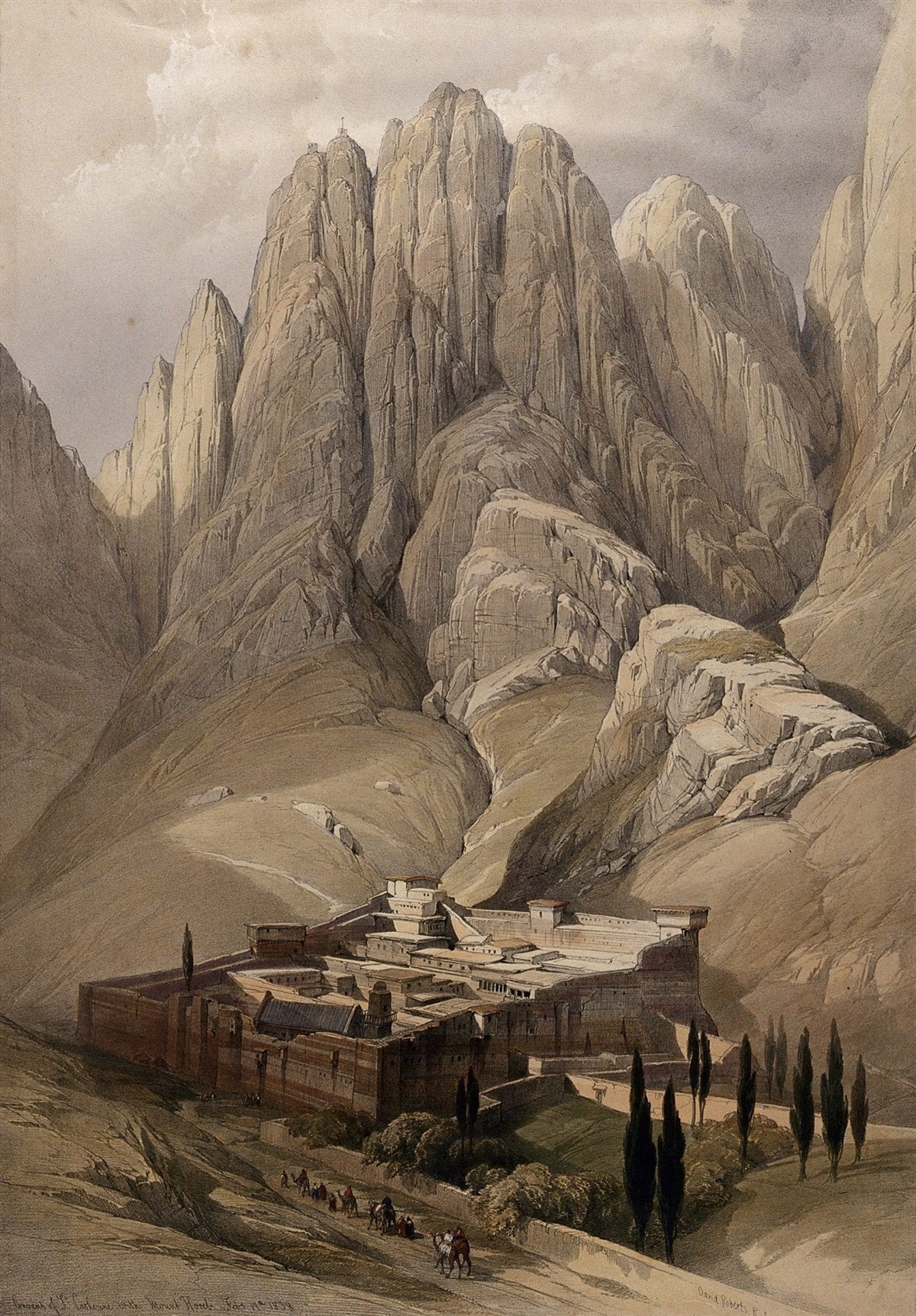
For the ascent to the holy summit of Mount Sinai varies between five and seven hours. There are two ways to ascend: the historic one (6th century) and the newer one (19th century), setting out on the north-eastern side of the Holy Monastery. The first one, the Way of the Steps, is sooner but steep and difficult. For most of its length, it is consists of steep steps. The second one, the Camel Trail, has an ascending course that is longer but more gradual, hence it can be done on foot. However, for most of its length one can hire one of the camels that can always be found waiting outside the Holy Monastery.
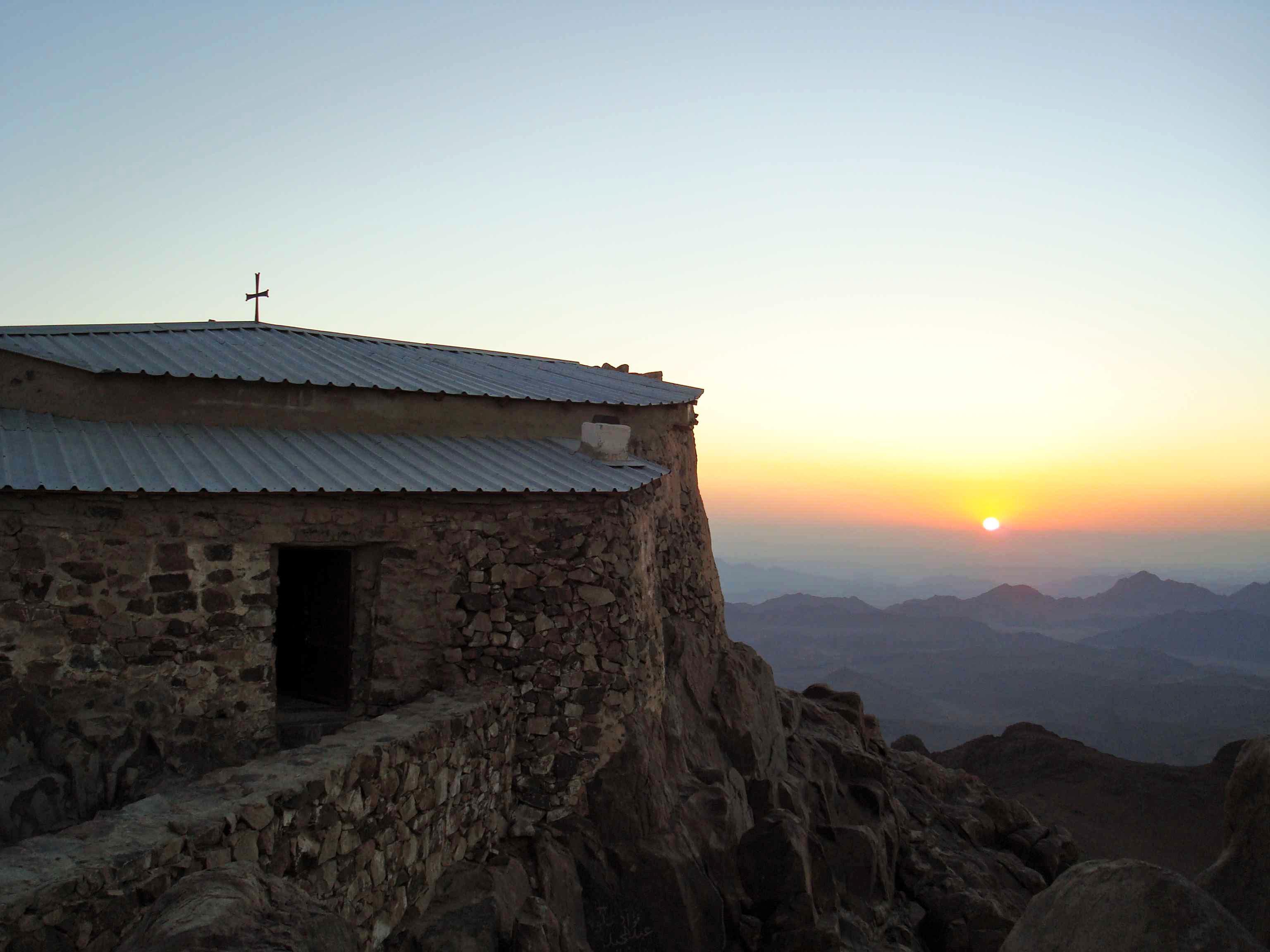
Following her martyrdom, angels bore the body of Saint Catherine to the peak of Mount Saint Catherine, where they rested until they were translated to the catholicon of the Holy Monastery of Sinai. Here they continue to emit a sweet fragrance, and many miracles are wrought to this day. The veneration of Saint Catherine spread throughout the West, especially after the translation of relics of Saint Catherine to Rouen by Symeon Pentaglosses, in the early eleventh century.
Mount Saint Catherine is the highest point in the Sinai peninsula, reaching a height of 2,646 meters. One begins the ascent to the peak from the Chapel of the Forty Martyrs (Arbain), from where it is a four hour climb to the summit. The peak is surmounted by the Chapel of Saint Catherine, which is adjoined by two cells and a small kitchen area for the aid of pilgrims. From the summit, it is possible to view the Red Sea and the distant mountains of mainland Egypt.
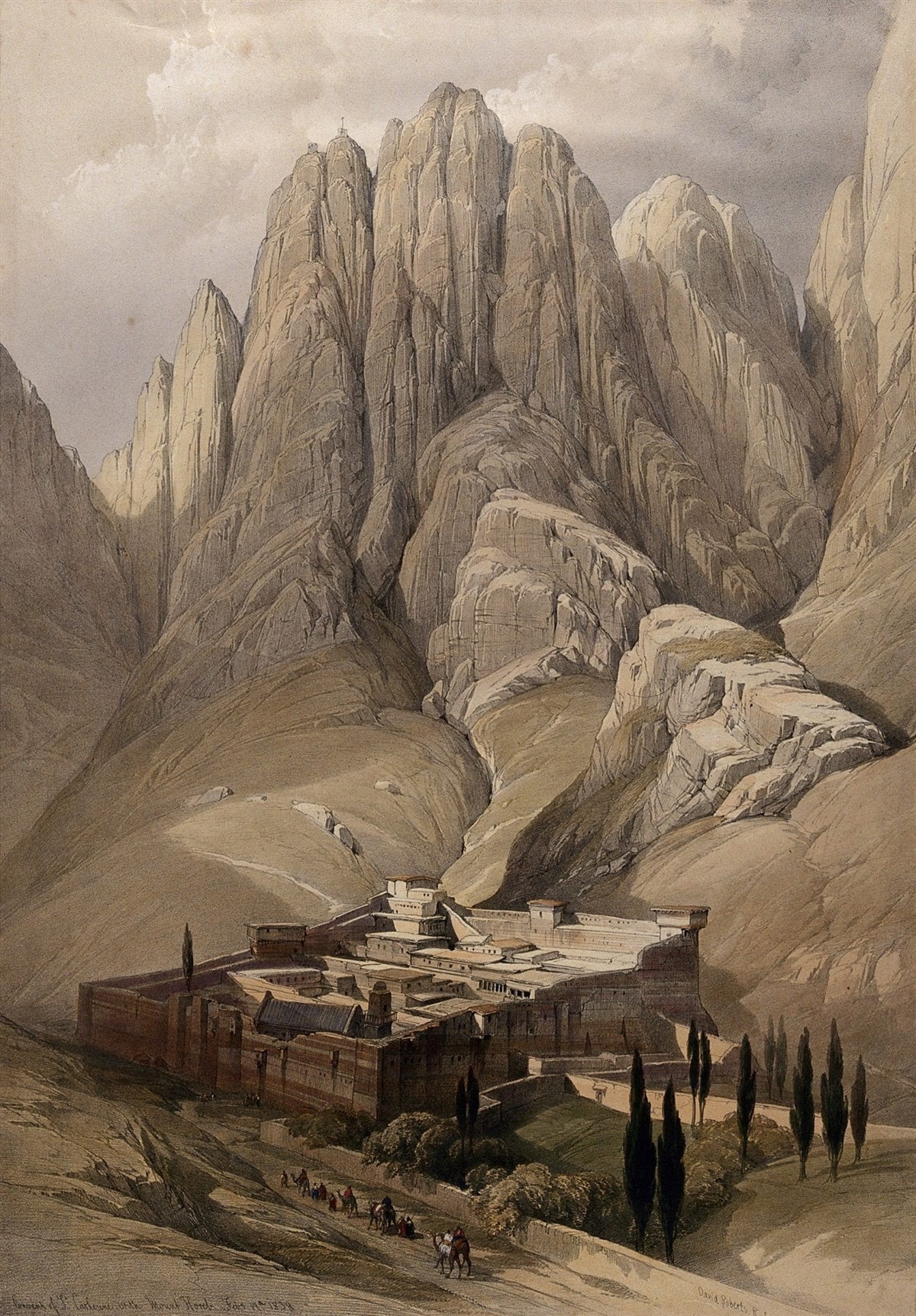
The desert, bereft of material fruits, is abundant in spiritual fruits. These spiritual fruits have flourished in the Sinai desert from the fourth century. It is said of the fourth century that the cities became a desert, and the desert was turned into a city. From that time, ascetics gathered at the site of the Burning Bush and the chapel dedicated to the All-holy Virgin Mary, established with the support of Saint Helen, withstanding both deprivations and destructions.
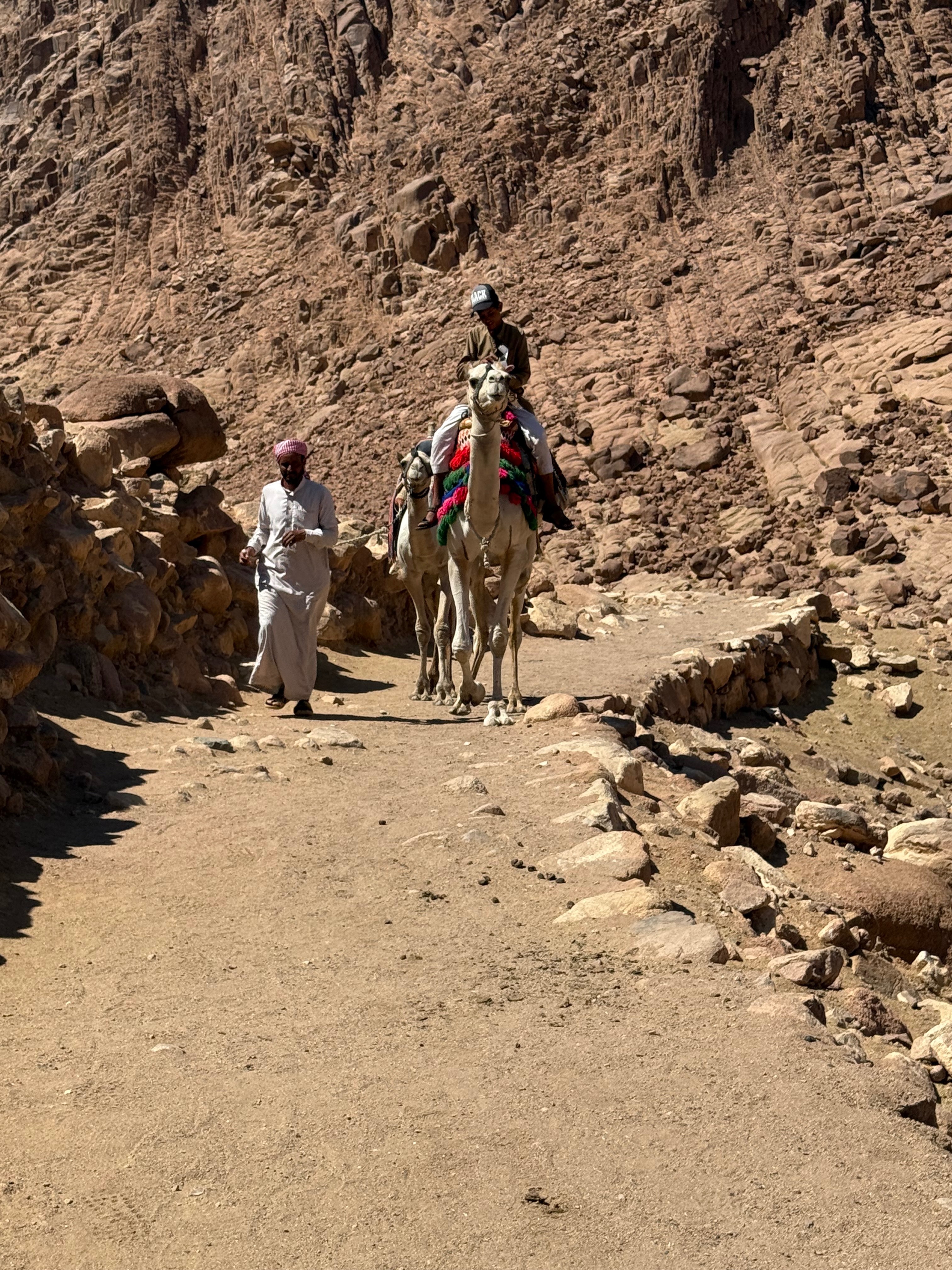
Of the six tribes that inhabit the South Sinai area, the tribe of the Jebeliya is the oldest and the one most closely attached to the monastery, as they are the descendants of the guards that the Emperor Justinian dispatched to the monastery in the sixth century. The Jebeliya are subdivided into four families: the descendants of Selim, of Emb or Ouhembat, of Hement, and of Ntzinti.
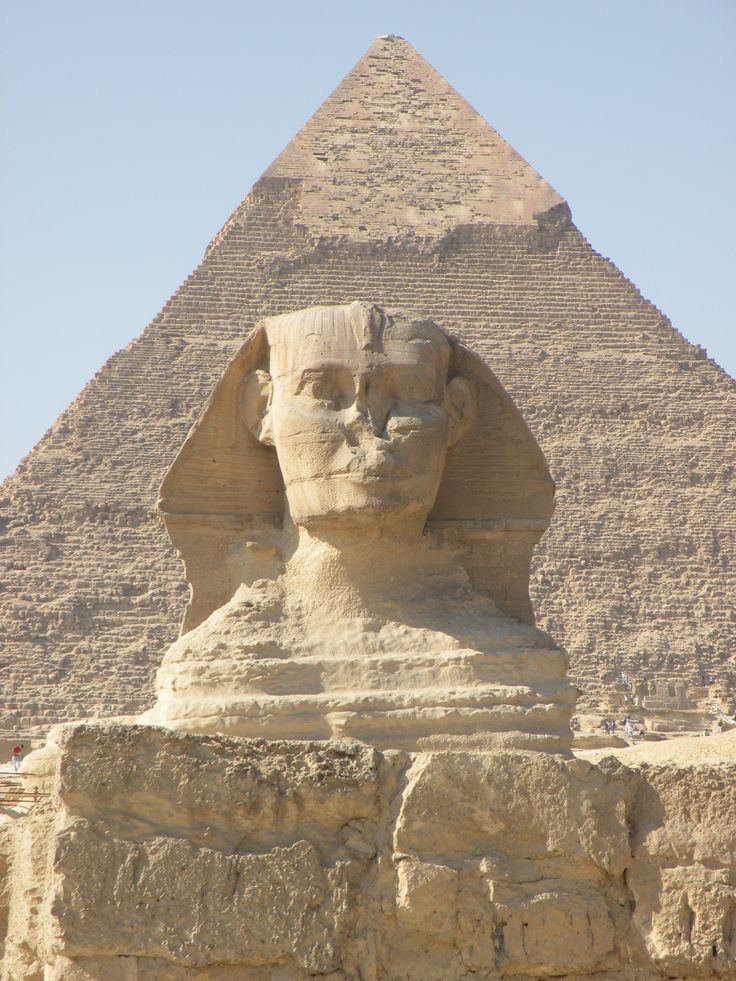
We depart our Retreat-Stay at Saint Catherine's Monastery. We travel to Cairo International Airport and on to Novotel Cairo. In the evening you will experience in a VIP EXCLUSIVE VISIT TO THE GREAT PYRAMID- The King's Chamber, The Queen's Chamber, The Subterranean Chamber.
Duration: 2 hours
The Great Pyramids enshrine ark libraries that regenerate our human consciousness to perceive and calibrate with complex sacred ecosystem of greater benign intelligence beyond current systems of intelligence and psychological programming. The earliest ancient Egyptians built to preserve and conserve pre-history in balance with that sacred ecosystem. The pyramids field is a prehistory legacy and construction enigma. An advanced and complex technology, architecture, and ark capable of protecting human survival beyond the reset of Atlantis or Mut. Its geographical placement and engineering genius stabilizes cataclysmic shifts progressed during precession equinox alignments.
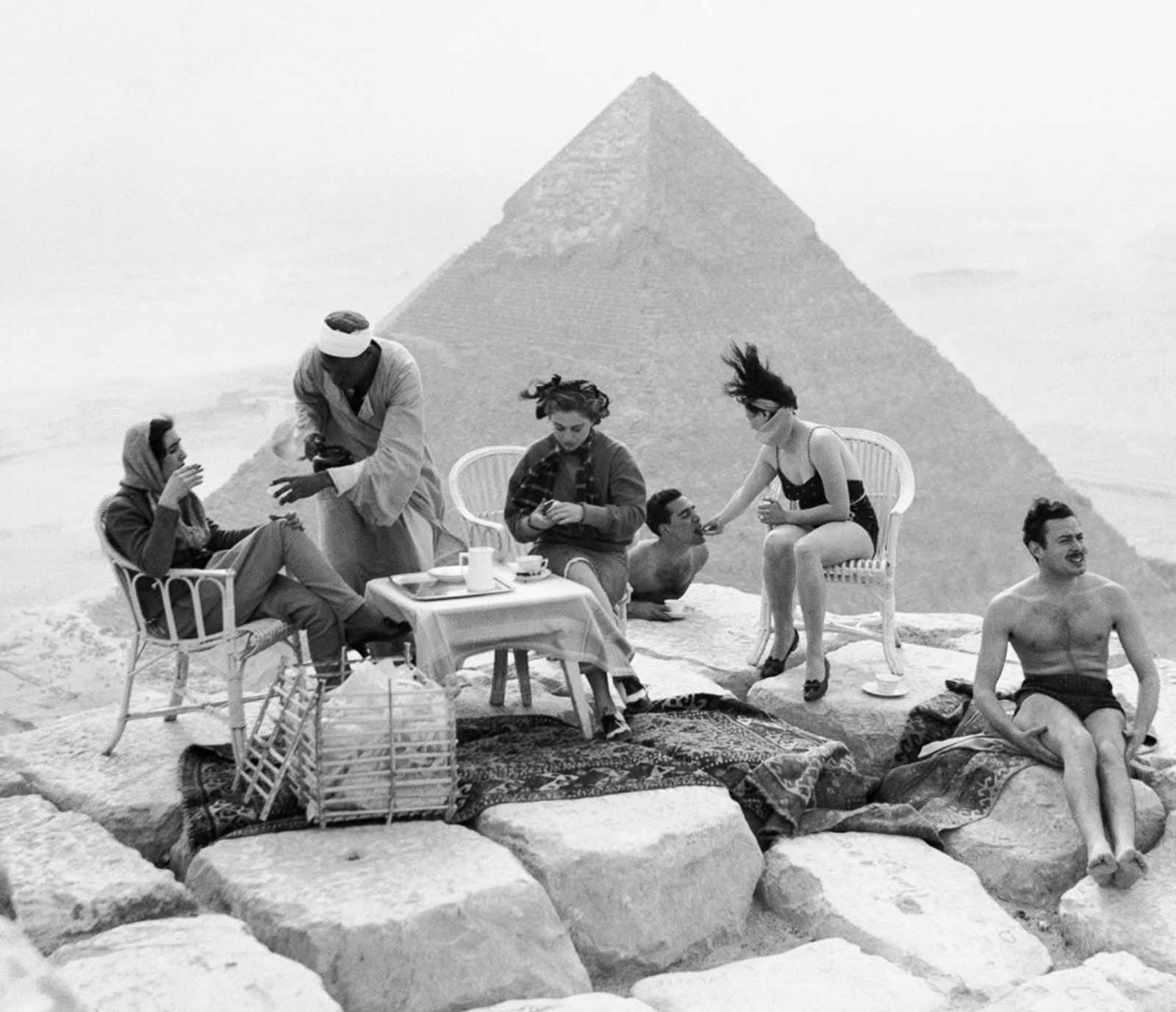
Departure Cairo International Airport
Bon Voyage
